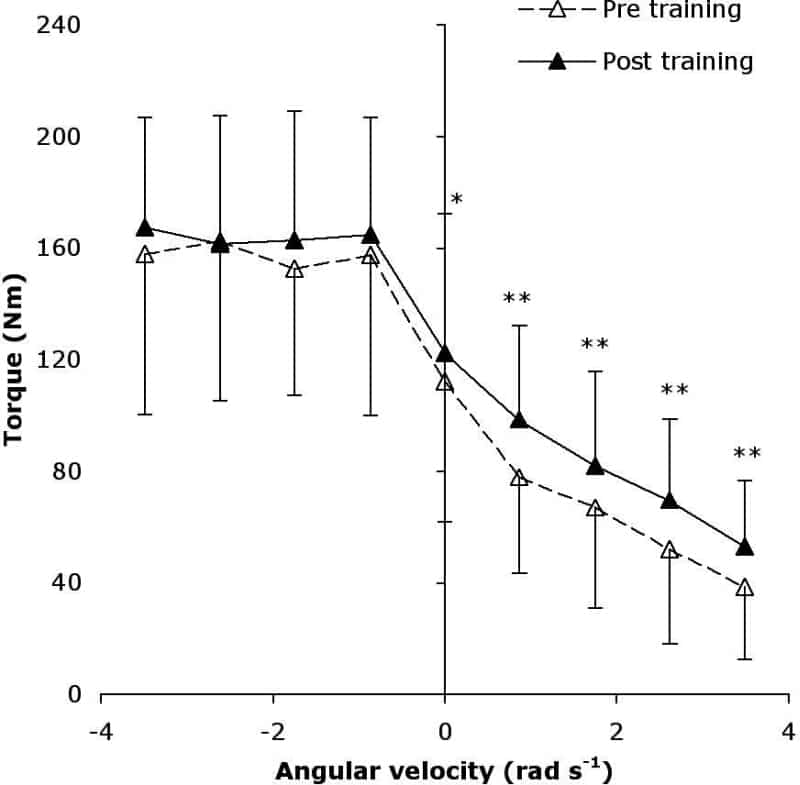The decline in dynamic strength with age is closely associated with a deterioration in functional performance (for review see Macaluso & De Vito 2004). Whilst resistive training in older adults has been shown to increase strength (e.g., Fiatarone, et al. 1990), little is known on the training-induced adaptations in the torque-velocity (T-V) relation. Hence, the present study investigated the effect of strength training on the T-V relation in elderly humans and the origin of any changes. After receiving ethics committee approval, older adults were assigned to training (mean±SD age: 74.3±3.5 years; n=9) and non-training control (age 67.1±2 years; n=9) groups. Knee-extension and leg-press exercises (2 series of ~10 repetitions at 80% of the 5-repetition maximum) were performed 3 times/week for 14 weeks. Maximal isokinetic knee extension torque was assessed during concentric and eccentric contractions at angular velocities of 0.87, 1.75, 2.62 and 3.49 rad s-1. Agonist-antagonist muscle activation was assessed using electromyography. Vastus lateralis (VL) muscle architecture (fascicle length and pennation angle) was examined in vivo using ultrasound imaging. VL muscle fascicle force-velocity (F-V) relation was estimated using a muscle-model taking into account muscle architecture, the contribution of the VL to knee extension force, patella tendon moment arm length and antagonist coactivation. Data were analysed using factorial analysis of variance, with a Sheffé post-hoc test applied where necessary. Training increased concentric torque by 22-37% across the four angular velocities (P<0.01), but failed to modify eccentric torque (P>0.05; Fig.1). Fascicle force increased by 28, 26, 46 and 50% at shortening velocities corresponding to 0.87, 1.75, 2.62 and 3.49 rad s-1, respectively (P<0.01). Increased agonist muscle activation, increased fascicle lengths and greater elastic energy recovery from tendinous structures may explain the gain in concentric torque, whilst the lack of changes in eccentric torque and fascicle force likely reflects the preservation of eccentric force with ageing (Hortobagyi, et al. 1995). The present findings are expected to positively influence dynamic muscle performance in old age, such as stairs negotiation.
King's College London (2005) J Physiol 565P, C26
Communications: Dynamic Characteristics of Elderly Human Muscle: Adaptations to Resistance Training
Reeves, Neil David; Maganaris, Constantinos N; Narici, Marco V;
1. Institute for Biophysical & Clinical Research into Human Movement, Manchester Metropolitan University, Alsager, United Kingdom.
View other abstracts by:
Figure 1. Knee extensor torque-velocity relation for the training group. Values are means and SD significantly increased torque (*P < 0.05 and **P < 0.01) post training.
Where applicable, experiments conform with Society ethical requirements.

